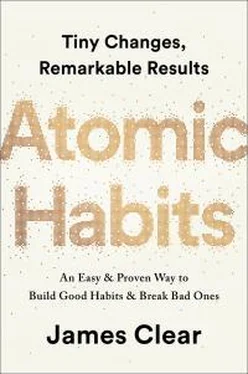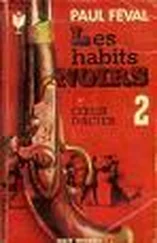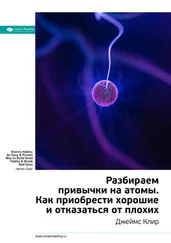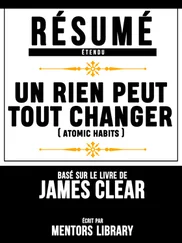We begin by examining a biological signature that all habits share—the dopamine spike.
THE DOPAMINE-DRIVEN FEEDBACK LOOP
Scientists can track the precise moment a craving occurs by measuring a neurotransmitter called dopamine.* The importance of dopamine became apparent in 1954 when the neuroscientists James Olds and Peter Milner ran an experiment that revealed the neurological processes behind craving and desire. By implanting electrodes in the brains of rats, the researchers blocked the release of dopamine. To the surprise of the scientists, the rats lost all will to live. They wouldn’t eat. They wouldn’t have sex. They didn’t crave anything. Within a few days, the animals died of thirst.
In follow-up studies, other scientists also inhibited the dopamine-releasing parts of the brain, but this time, they squirted little droplets of sugar into the mouths of the dopamine-depleted rats. Their little rat faces lit up with pleasurable grins from the tasty substance. Even though dopamine was blocked, they liked the sugar just as much as before; they just didn’t want it anymore. The ability to experience pleasure remained, but without dopamine, desire died. And without desire, action stopped.
When other researchers reversed this process and flooded the reward system of the brain with dopamine, animals performed habits at breakneck speed. In one study, mice received a powerful hit of dopamine each time they poked their nose in a box. Within minutes, the mice developed a craving so strong they began poking their nose into the box eight hundred times per hour. (Humans are not so different: the average slot machine player will spin the wheel six hundred times per hour.)
Habits are a dopamine-driven feedback loop. Every behavior that is highly habit-forming—taking drugs, eating junk food, playing video games, browsing social media—is associated with higher levels of dopamine. The same can be said for our most basic habitual behaviors like eating food, drinking water, having sex, and interacting socially.
For years, scientists assumed dopamine was all about pleasure, but now we know it plays a central role in many neurological processes, including motivation, learning and memory, punishment and aversion, and voluntary movement.
When it comes to habits, the key takeaway is this: dopamine is released not only when you experience pleasure, but also when you anticipate it. Gambling addicts have a dopamine spike right before they place a bet, not after they win. Cocaine addicts get a surge of dopamine when they see the powder, not after they take it. Whenever you predict that an opportunity will be rewarding, your levels of dopamine spike in anticipation. And whenever dopamine rises, so does your motivation to act.
It is the anticipation of a reward—not the fulfillment of it—that gets us to take action.
Interestingly, the reward system that is activated in the brain when you receive a reward is the same system that is activated when you anticipate a reward. This is one reason the anticipation of an experience can often feel better than the attainment of it. As a child, thinking about Christmas morning can be better than opening the gifts. As an adult, daydreaming about an upcoming vacation can be more enjoyable than actually being on vacation. Scientists refer to this as the difference between “wanting” and “liking.”
THE DOPAMINE SPIKE
FIGURE 9: Before a habit is learned (A), dopamine is released when the reward is experienced for the first time. The next time around (B), dopamine rises before taking action, immediately after a cue is recognized. This spike leads to a feeling of desire and a craving to take action whenever the cue is spotted. Once a habit is learned, dopamine will not rise when a reward is experienced because you already expect the reward. However, if you see a cue and expect a reward, but do not get one, then dopamine will drop in disappointment (C). The sensitivity of the dopamine response can clearly be seen when a reward is provided late (D). First, the cue is identified and dopamine rises as a craving builds. Next, a response is taken but the reward does not come as quickly as expected and dopamine begins to drop. Finally, when the reward comes a little later than you had hoped, dopamine spikes again. It is as if the brain is saying, “See! I knew I was right. Don’t forget to repeat this action next time.”
Your brain has far more neural circuitry allocated for wanting rewards than for liking them. The wanting centers in the brain are large: the brain stem, the nucleus accumbens, the ventral tegmental area, the dorsal striatum, the amygdala, and portions of the prefrontal cortex. By comparison, the liking centers of the brain are much smaller. They are often referred to as “hedonic hot spots” and are distributed like tiny islands throughout the brain. For instance, researchers have found that 100 percent of the nucleus accumbens is activated during wanting. Meanwhile, only 10 percent of the structure is activated during liking.
The fact that the brain allocates so much precious space to the regions responsible for craving and desire provides further evidence of the crucial role these processes play. Desire is the engine that drives behavior. Every action is taken because of the anticipation that precedes it. It is the craving that leads to the response.
These insights reveal the importance of the 2nd Law of Behavior Change. We need to make our habits attractive because it is the expectation of a rewarding experience that motivates us to act in the first place. This is where a strategy known as temptation bundling comes into play.
HOW TO USE TEMPTATION BUNDLING TO MAKE YOUR HABITS MORE ATTRACTIVE
Ronan Byrne, an electrical engineering student in Dublin, Ireland, enjoyed watching Netflix, but he also knew that he should exercise more often than he did. Putting his engineering skills to use, Byrne hacked his stationary bike and connected it to his laptop and television. Then he wrote a computer program that would allow Netflix to run only if he was cycling at a certain speed. If he slowed down for too long, whatever show he was watching would pause until he started pedaling again. He was, in the words of one fan, “eliminating obesity one Netflix binge at a time.”
He was also employing temptation bundling to make his exercise habit more attractive. Temptation bundling works by linking an action you want to do with an action you need to do. In Byrne’s case, he bundled watching Netflix (the thing he wanted to do) with riding his stationary bike (the thing he needed to do).
Businesses are masters at temptation bundling. For instance, when the American Broadcasting Company, more commonly known as ABC, launched its Thursday-night television lineup for the 2014–2015 season, they promoted temptation bundling on a massive scale.
Every Thursday, the company would air three shows created by screenwriter Shonda Rhimes— Grey’s Anatomy , Scandal , and How to Get Away with Murder . They branded it as “TGIT on ABC” (TGIT stands for Thank God It’s Thursday). In addition to promoting the shows, ABC encouraged viewers to make popcorn, drink red wine, and enjoy the evening.
Andrew Kubitz, head of scheduling for ABC, described the idea behind the campaign: “We see Thursday night as a viewership opportunity, with either couples or women by themselves who want to sit down and escape and have fun and drink their red wine and have some popcorn.” The brilliance of this strategy is that ABC was associating the thing they needed viewers to do (watch their shows) with activities their viewers already wanted to do (relax, drink wine, and eat popcorn).
Читать дальше




![Джеймс Клир - Атомные привычки [Как приобрести хорошие привычки и избавиться от плохих]](/books/403243/dzhejms-klir-atomnye-privychki-kak-priobresti-horosh-thumb.webp)



